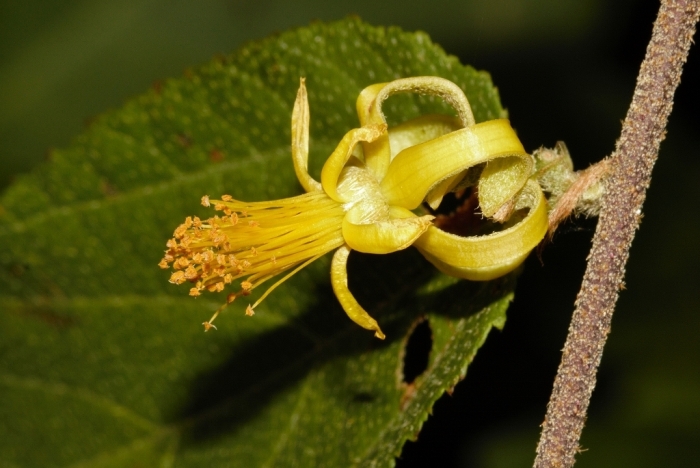Rough-Leaved Raisin
(Grewia flavescens)
Rough-Leaved Raisin (Grewia flavescens)
/
/

i_c_riddell
CC BY 4.0
Image By:
i_c_riddell
Recorded By:
Copyright:
CC BY 4.0
Copyright Notice:
Photo by: i_c_riddell | License Type: CC BY 4.0 | License URL: http://creativecommons.org/licenses/by/4.0/ | Rights Holder: i_c_riddell | Publisher: iNaturalist | Date Created: 2018-01-12T11:50:39-08:00 |
























Estimated Native Range
Summary
Grewia flavescens, commonly known as rough-leaved raisin or donkey berry, is a deciduous shrub or small tree native to a variety of habitats including savannas, woodlands, and forest margins in sub-Saharan Africa, Yemen, Saudi Arabia, and India. It can reach up to 20 feet in height and is characterized by its rough-textured leaves, which contribute to its common name. The plant produces small, yellow to orange flowers that are not particularly showy, followed by edible fruits that resemble raisins when dried. The fruiting season varies depending on the regional climate but typically occurs when conditions are favorable for fruit development.
Grewia flavescens is valued for its fruit, which is consumed fresh or dried, and its foliage, which is used as livestock forage. It is also culturally significant in some regions for its use in traditional medicine. In cultivation, it is appreciated for its drought tolerance and adaptability to various soil types, although it prefers well-drained soils. It requires full sun to part shade and can be used in agroforestry systems, as a windbreak, or for erosion control. There are no widely known cultivars, but its potential for use in sustainable agriculture and reforestation projects is recognized. Gardeners should be aware that it may require pruning to maintain a desired shape and can be susceptible to pests such as caterpillars, which feed on the leaves.CC BY-SA 4.0
Grewia flavescens is valued for its fruit, which is consumed fresh or dried, and its foliage, which is used as livestock forage. It is also culturally significant in some regions for its use in traditional medicine. In cultivation, it is appreciated for its drought tolerance and adaptability to various soil types, although it prefers well-drained soils. It requires full sun to part shade and can be used in agroforestry systems, as a windbreak, or for erosion control. There are no widely known cultivars, but its potential for use in sustainable agriculture and reforestation projects is recognized. Gardeners should be aware that it may require pruning to maintain a desired shape and can be susceptible to pests such as caterpillars, which feed on the leaves.CC BY-SA 4.0
Plant Description
- Plant Type: Shrub, Tree
- Height: 6-20 feet
- Width: 6-20 feet
- Growth Rate: Moderate
- Flower Color: Yellow
- Flowering Season: Spring, Summer
- Leaf Retention: Deciduous
Growth Requirements
- Sun: Full Sun, Part Shade
- Water: Medium
- Drainage: Medium
Common Uses
Bee Garden, Bird Garden, Drought Tolerant, Edible*Disclaimer: Easyscape's listed plant edibility is for informational use. Always verify the safety and proper identification of any plant before consumption., Low Maintenance, Showy Flowers
Natural Habitat
Native to savannas, woodlands, and forest margins in sub-Saharan Africa, Yemen, Saudi Arabia, and India
Other Names
Common Names: White Cross-berry, Bukukutila, Butola, Ikolo Lombo, Kaseketi, Korombo, Velvet Raisin, Lukukuma
Scientific Names: , Grewia flavescens, Grewia aspera, Grewia bipartita, Grewia carpinifolia, Grewia carpinifolia, Grewia commutata, Grewia fabreguesii, Grewia flavescens var. brevipedunculata, Grewia homblei
GBIF Accepted Name: